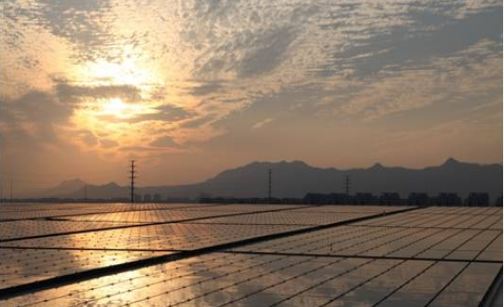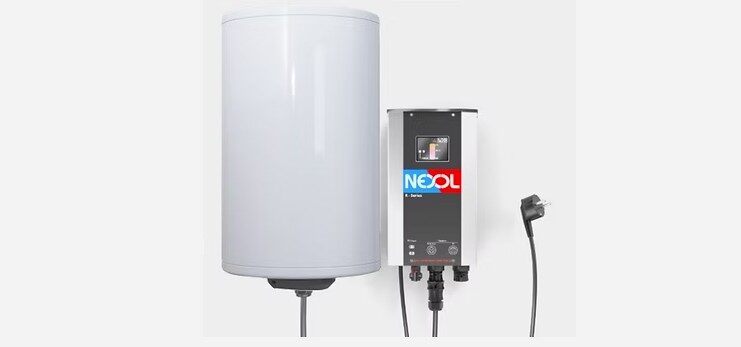The troubled Chinese PV group — whose shares were suspended from trading in early 2015, after sinking 47% in a single morning’s trading session amid mounting questions over revenue derived from sales to its unlisted, Beijing-based parent — acknowledged that it supplied HK$1.06 billion of copper indium gallium selenium (CIGS) thin-film and amorphous silicon-based PV production kit to affiliates of the Hanergy group in the first half of 2017. However, HTF claimed that it did not sign any new purchase contracts with Hanergy affiliates in the January-June period.
In particular, its manufacturing unit sold HK$656.3 million of equipment to Jingzhou Shunbai Solar Power in the first half. It also generated HK$1.06 billion from the sale of 600 MW of automated CIGS production lines to Shandong Zibo Hanergy Thin Film Solar. In total, sales from its manufacturing unit reached HK$1.7 billion in the January-June period, while sales of thin-film solar panels fell to HK$9.6 million, from HK$110.4 million a year earlier, according to a statement to the Hong Kong stock exchange.
The company, which lost nearly $19 billion of its market value when its shares plunged in May 2015 — after surging roughly 600% in the preceding two years on the Hong Kong exchange — reported that its downstream unit generated revenue of HK$1.13 billion from PV project development in the first half of this year. Sales of rooftop solar arrays rose to HK$1.02 billion, from HK$606.9 million in the first six months of 2016.
HTF did not reveal how much PV capacity it currently operates in China. However, it said that in the first half it completed a 2.3 MW rooftop solar project in Ede, the Netherlands, as well as a building-integrated PV project for State Power Investment Corp. (SPIC) in Beijing. It also agreed to build a 1.9 MW agricultural PV project — under the Chinese government’s poverty alleviation scheme — in Xundian, in southwestern China’s Yunnan province. In addition, the company signed a deal with Zhongya Photovoltaic Power Development, valued at HK$135.8 million, to build 15 MW of poverty-alleviation PV projects in Pingdingshan, Henan province.
Sales of electricity from HTF's solar projects also increased from the preceding year to HK$20.4 million. Sales of unspecified PV application products — not including its recently released Hantile PV-integrated roofing tiles — rose to HK$4.7 million, from HK$2.8 million a year earlier. The company’s engineering services unit, which recorded turnover of HK$6.3 million in the first half of 2016, did not generate any revenue in the first six months of this year.
HTF said that its sales in China accounted for more than 99% of its total revenue, at HK$2.8 billion. Revenue from the U.S. market fell 61.6% year on year to HK$7.4 million, while revenue from Europe plunged 83.4% to HK$19.8 million, suggesting that the company is still struggling to recover from its troubles of the past few years.
However, while HTF’s shares remain suspended from trading on the Hong Kong stock exchange — amid a protracted investigation into its business practices — the group has continued to establish new relationships with companies and organizations outside of China in recent months. Last week, its California-based Alta Devices subsidiary announced a deal to develop a PV-integrated prototype vehicle with German automaker Audi by the end of this year. And in April of this year, HTF agreed to extend its collaboration with Dutch R&D outfit Solliance Solar Research on the SolaRoad project.
The company — which has acquired a number of foreign companies since moving into thin-film PV eight years ago, including Alta Devices, Germany’s Solibro and CIGS specialist MiaSolé — said that its current liabilities rose 44.5% on the year in the first half of this year to roughly HK$7 billion. Total current assets totalled HK$15.14 million, up from HK$12.4 million a year earlier.
HTF said that it continues to talk to the Hong Kong market regulator about the possibility of resuming trading of its shares. Under the current conditions set out by the Securities and Futures Commission of Hong Kong (SFC), the resumption of trading hinges partly on assurances that Hanergy chairman Li Hejun and four independent non-executive directors will not contest liability in civil proceedings against them by the SFC. In addition, HTF must provide the SFC with documents detailing its business, assets, liabilities, financial performance and future prospects.
In April, the company claimed that it returned to a profit of HK$252 million in 2016, on revenue of HK$4.48 billion.
This content is protected by copyright and may not be reused. If you want to cooperate with us and would like to reuse some of our content, please contact: editors@pv-magazine.com.



By submitting this form you agree to pv magazine using your data for the purposes of publishing your comment.
Your personal data will only be disclosed or otherwise transmitted to third parties for the purposes of spam filtering or if this is necessary for technical maintenance of the website. Any other transfer to third parties will not take place unless this is justified on the basis of applicable data protection regulations or if pv magazine is legally obliged to do so.
You may revoke this consent at any time with effect for the future, in which case your personal data will be deleted immediately. Otherwise, your data will be deleted if pv magazine has processed your request or the purpose of data storage is fulfilled.
Further information on data privacy can be found in our Data Protection Policy.